Kathmandu, the capital of Nepal, invites spirituality, past, and culture. The city is well-known for its various temples, exhibiting the rich religious tapestry of Hinduism and Buddhism practised in Nepal. These Kathmandu temples represent the height of ancient architectural and artistic abilities as places of worship. Each of these Kathmandu temples relates diverse experiences, mixing spiritual activities with historical and cultural aspects. Whether you visit Kathmandu, are attracted by its spiritual past, or are a pilgrim, these temples offer nearly unmatched insight into the religious and cultural life of the city.
Top 10 Kathmandu Temples You Must Visit
Exploring Kathmandu’s temples is a journey through its spiritual and cultural history. Here are some of the most famous temples in Kathmandu:
1. Swayambhunath Stupa
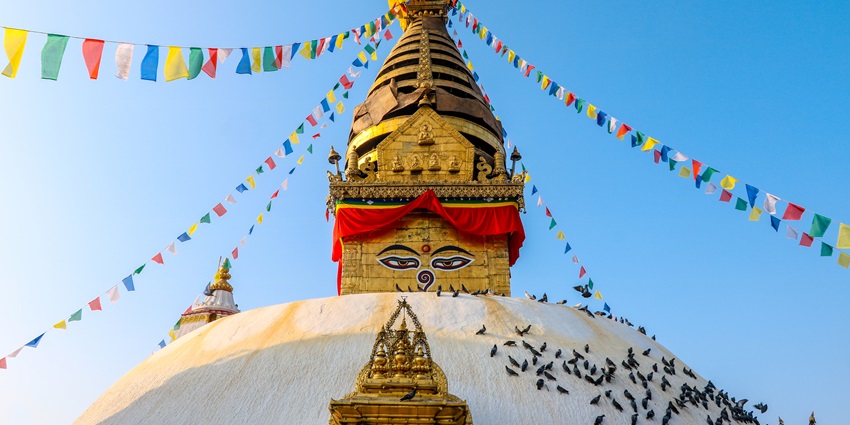
Photo: Nirmal Dulal / Wikimedia Commons
Perched on top of a hill, the Swayambhunath Stupa is one of Kathmandu’s most popular temples. This ancient stupa dates to the 5th century, making it a prominent pilgrimage site for Buddhists and listed as a UNESCO World Heritage Site. It comprises a vast dome with a gilt spire and the famous Buddha’s eyes on each of the four sides, an image symbolizing wisdom and compassion. It is surrounded by monasteries, shrines, and statues, overshooting the beauty of spirituality. This place commands a panoramic view of Kathmandu Valley, which is full of monkeys.
Timings: 8 AM – 6 PM
Entry Fee: NPR 200 / ₹125.90 for foreigners
Suggested Read: Nepal Nightlife For Singles
2. Pashupatinath Temple
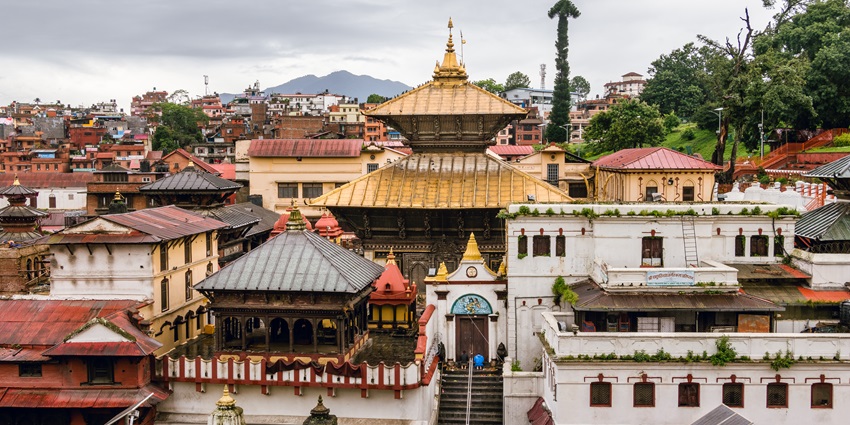
Photo: Bijay Chaurasia/ Wikimedia Commons
Located on the banks of the Bagmati River, Pashupatinath Temple is one of the holiest Hindu temples in Kathmandu, dedicated to Lord Shiva. This sacred site features a pagoda-style temple housing a linga, a symbolic representation of Shiva. The temple complex spans over 264 hectares and includes numerous smaller shrines and temples. The ghats along the river are used for traditional Hindu cremation rites, which adds a unique cultural dimension to the site. Pashupatinath is especially vibrant during the Maha Shivaratri festival when thousands of devotees gather to celebrate.
Timings: 4 AM – 12 PM, 5 PM – 7PM
3. Boudhanath Stupa
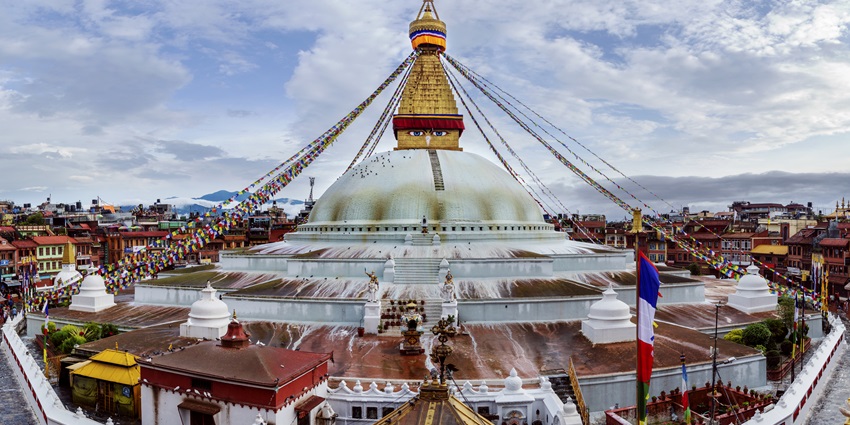
Photo: Bijay Chaurasia / Wikimedia Commons
Boudhanath Stupa, located in the northeastern part of Kathmandu, is one of the largest and most important stupas in Nepal. As a central hub for Tibetan Buddhism, it features a massive mandala-shaped stupa adorned with vibrant prayer flags and the omnipresent eyes of Buddha. The stupa’s design invites pilgrims and visitors to circumambulate the structure, engaging in a spiritual practice. The surrounding area is filled with Tibetan monasteries, shops, and restaurants, adding to the site’s cultural richness. Boudhanath offers a serene and spiritually uplifting experience for those interested in Buddhist traditions.
Timings: 6 AM – 7PM
Entry Fee: NPR 400 / ₹251.81 for foreigners
Suggested Read: Adventure Sports In Nepal For Every Adrenaline Junkie
4. Budhanilkantha Temple
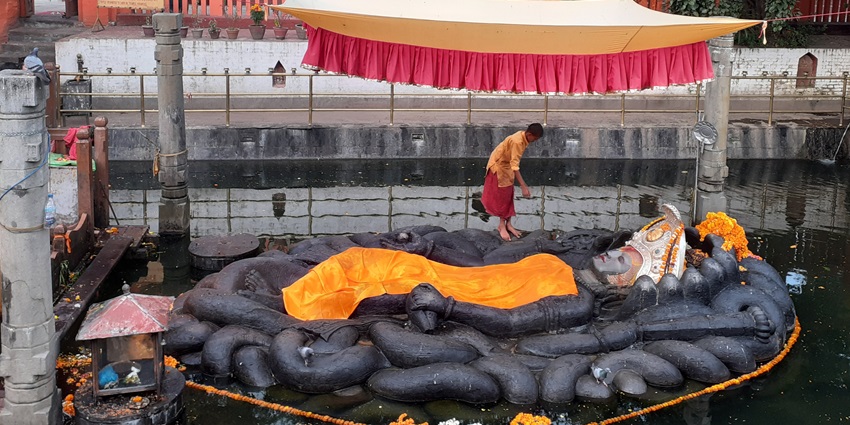
Photo: D rauniyar d / Wikimedia Commons
Budhanilkantha Temple, also known as the Sleeping Vishnu Temple, is located in the northern part of Kathmandu. The temple is famous for its colossal statue of Lord Vishnu reclining on a bed of serpents. This unique representation of Vishnu is carved from a single block of stone and is surrounded by a sacred pond. The serene setting and the impressive statue make Budhanilkantha a significant site for both worshippers and visitors. The temple complex also includes smaller shrines and a peaceful garden area.
Timings: 6 AM – 6 PM
5. Changunarayan Temple
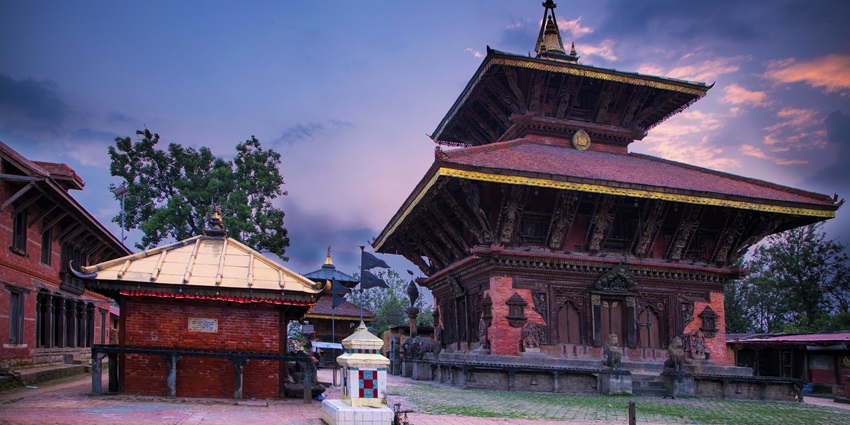
Photo: Mithun Kunwar / Wikimedia Commons
Situated in the Bhaktapur District, within the Kathmandu Valley, Changunarayan Temple is one of the oldest Hindu temples in Nepal, which is believed to have been constructed in the 4th century. Dedicated to Lord Vishnu, the temple is renowned for its intricate carvings and historical architecture. The pagoda-style structure features detailed sculptures depicting various deities and mythological scenes. Changunarayan is set in a tranquil environment with lush greenery, providing a peaceful atmosphere for worship and reflection.
Timings: 6 AM – 6 PM
Entry Fee: NPR 1000 / ₹629.50 for foreigners
Suggested Read: Chitwan Jungle Safari
6. Kopan Monastery
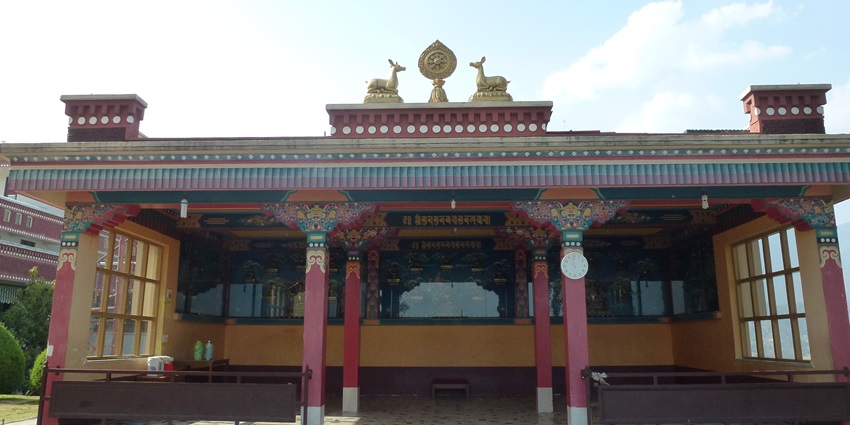
Photo: Irina Gelbukh / Wikimedia Commons
Kopan Monastery, situated on a hilltop overlooking Kathmandu, is a prominent Tibetan Buddhist monastery and centre for meditation. Founded in 1971, it offers a peaceful retreat for those seeking to learn about Tibetan Buddhism and engage in meditation practices. The monastery’s complex includes several meditation halls, shrines, and a library. Visitors can attend teachings and retreats, providing an opportunity to immerse themselves in Buddhist practices and philosophy. The monastery’s location provides stunning views of the Kathmandu Valley and the Himalayas.
Timings: 9 AM – 5 PM
7. Sankhu Temple
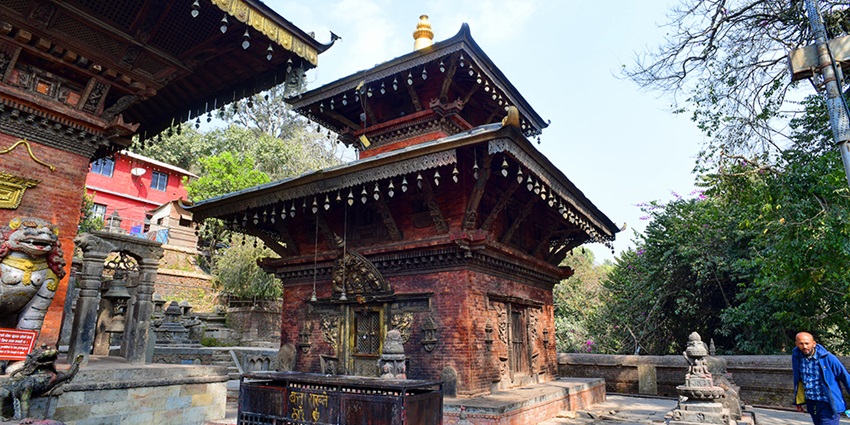
Photo: Rajesh Dhungana / Wikimedia Commons
Sankhu Temple, located in the Sankhu village near Kathmandu, is a famous Hindu temple in Kathmandu dedicated to the goddess Vajrayogini. The temple features unique architectural elements, including an intricately carved entrance and a sacred pond where pilgrims perform rituals. Sankhu Temple holds significant cultural and religious importance, reflecting traditional Nepalese religious practices. The surrounding village, with its historical context and cultural heritage, adds depth to the spiritual experience at the temple.
Timings: 6 AM – 6 PM
Suggested Read: Jungle Safari In Nepal
8. Guhyeshwari Temple
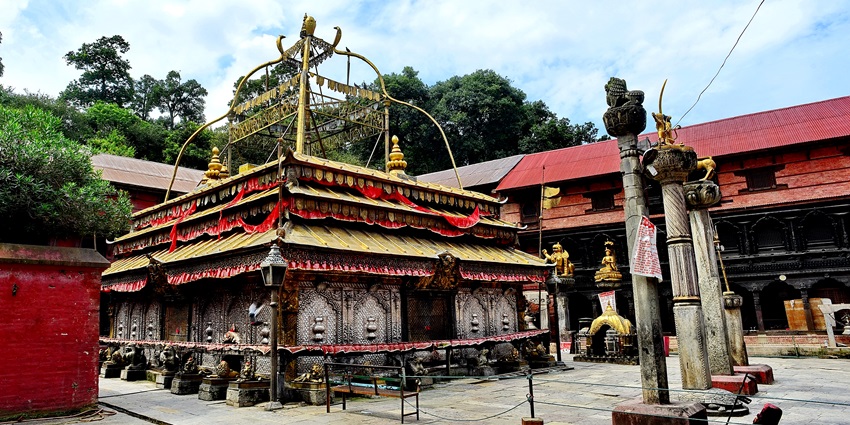
Photo: Rajesh Dhungana / Wikimedia Commons
Guhyeshwari Temple, located near the Pashupatinath Temple, is a significant Hindu shrine dedicated to the goddess Guhyeshwari, a form of Parvati. The temple is known for its sacred ambience and historical significance. The site includes a central shrine with a sacred linga and is surrounded by lush greenery and smaller shrines. The Temple is a focal point for numerous religious rituals and ceremonies, including daily pujas and special offerings, especially during the festival of Dashain and the Chhewar (first haircut) ceremonies. The temple is an important site for rituals and offerings, providing a serene environment for spiritual practices.
Timings: 6 AM – 6 PM
9. Dakshinkali Temple
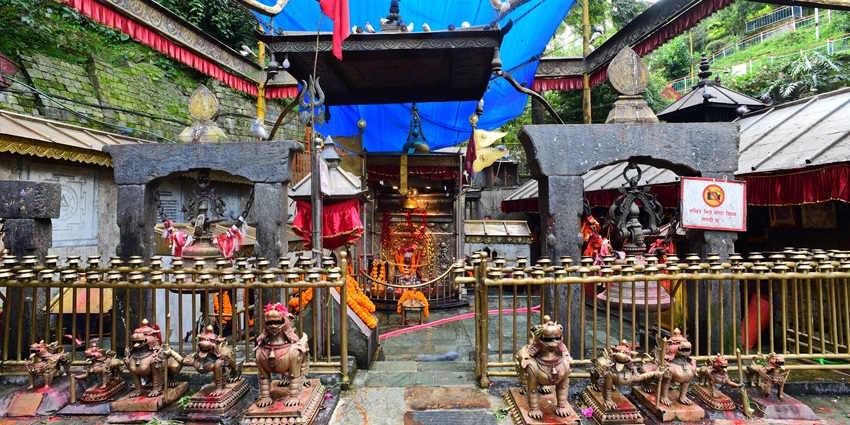
Photo: Rajesh Dhungana / Wikimedia Commons
Located about 22 kilometres south of Kathmandu, Dakshinkali Temple is dedicated to the goddess Kali, a fierce form of the divine feminine. The temple is renowned for its vibrant atmosphere, especially during the Kali Puja festival when animal sacrifices are offered as part of the rituals. The temple’s location in a lush, wooded area adds to its mystical and sacred ambience. Visitors can witness traditional ceremonies and experience the unique cultural practices associated with this site.
Timings: 6 AM – 6 PM
Suggested Read: Himalaya Base Camp Trek
10. Lalitpur Temples
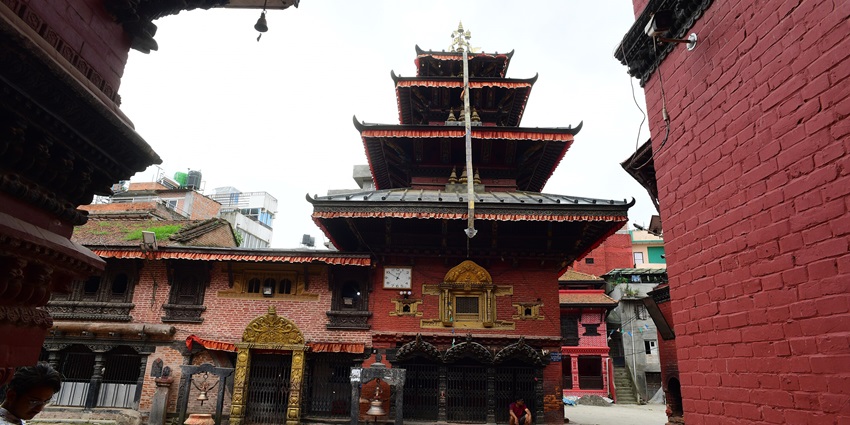
Photo: Rajesh Dhungana / Wikimedia Commons
Lalitpur, also known as Patan, is home to several significant temples, including the Hiranya Varna Mahavihar and the Mahaboudha Temple. Hiranya Varna Mahavihar, also known as the Golden Temple, is a prominent Buddhist monastery known for its golden façade and intricate carvings. The Mahaboudha Temple, with its unique brick structure and thousands of Buddha images, offers a distinctive architectural style. Both temples reflect the rich cultural and religious heritage of Lalitpur and are essential sites for exploring the artistic and spiritual traditions of Kathmandu Valley.
Kathmandu temples are more than just places of worship; they are repositories of the city’s rich history and culture. Each temple provides a unique insight into Kathmandu’s spiritual traditions, architectural achievements, and historical developments. Visiting these sacred sites offers a deeper understanding of the religious and cultural life that shapes the city. Discover exclusive travel packages and cultural tours for your Kathmandu trip on TripXL.
Cover Photo: Alexey Komarov / Wikimedia Commons / Image For Representation Only


 WhatsApp
WhatsApp
 Twitter
Twitter









